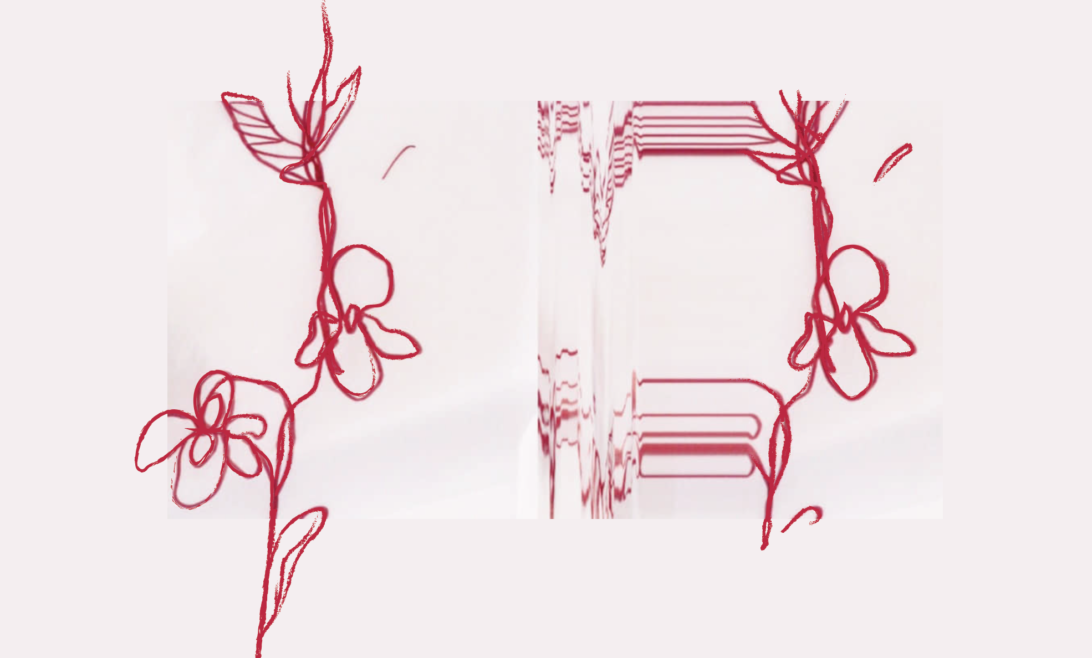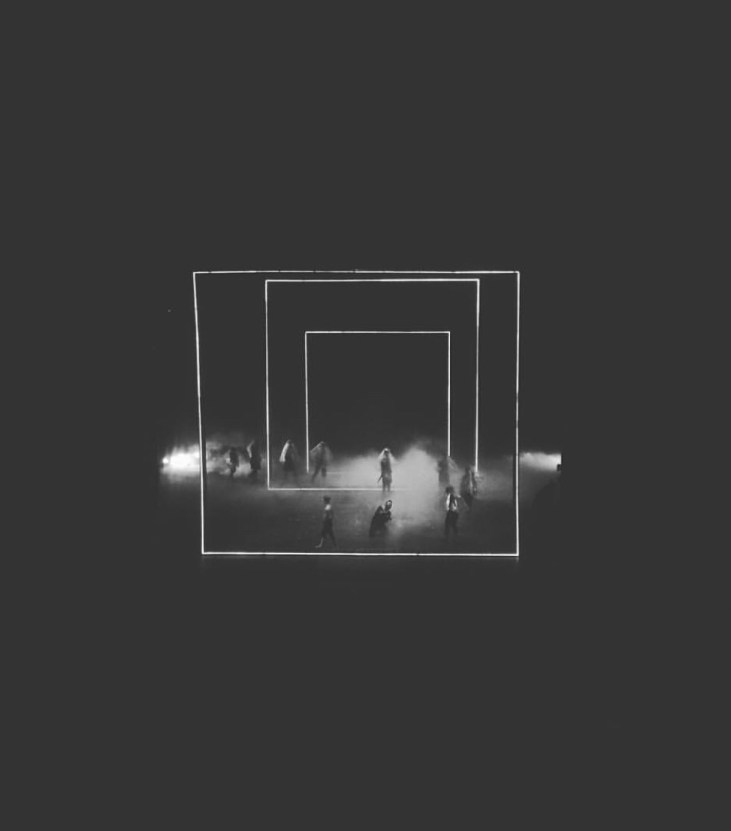Origin of love


Exquisite Corpse




Wicked little town

Origin of love


Exquisite Corpse




Wicked little town
STAGE
MYTHOLOGY
VESSEL
VISUAL
//
DIGITAL MODEL
The origin of love


Exquisite Corpse


Wicked little town – reprise

//
WHITE MODEL


-Aidan Nelson, Alexandra Lopez, Nathier Fernández & Sam Hains-
One Simple Sentence
Hedwig and the Angry Inch is about a painful quest for wholeness.
One Complex Sentence
Hedwig And The Angry Inch is about repairing the sense of self which fractures in the face of trauma.
Three to Five Sentence version of the story
Hedwig and the Angry Inch is about a genderqueer rock musician retelling the story of her life on stage. She relives the pain of trying to find completeness through the conditional love of others: an emotionally absent mother, a botched sex change operation, and the betrayal of her musician protégé. We are left with a vision of an individual overcoming of the painful divisions in her self to become whole.
//
Our world
This collage represents our current visual thinking about our world. We are considering a failed ‘norse mythological’ musical such as Beowulf or ‘Revenge of the Vikings’.

Image research
Hedwig’s stage
Failed musical [Norse mythology]
On stage setup/exit door [While Hedwig is making her show]

Inspiration

Night rules this world, light is artificial, bright, hard and kitsch. Light becomes more natural and playful as we get into the world of memories and dreams [interiors], most of the time we are outside, space is open, cold, dark and wet. It feels abandoned, scars of conflict are visible on it.
Time goes linearly although it glitches from time to time. Time is like our main character frenetic, loud and sarcastic, it delivers raw and hard truths so fast that it takes us a bit to realize there are sadness and cruelty in this world, is a defence mechanism. It feels like we are in an edited flashback always.
The mood is created by the continuous monologue Hedwig is giving. The passive-aggressive interactions we see with the band members, Yitzhak, Hedwig’s mothers or others. No one is comfortable in their own skin or their current situation, we can feel it.
Wigs, makeup and heels are part of the picture, is not a world of drag queens but is close to it. Hedwig’s pass as a woman and she knows it but she is in between [scars of conflict are visible] gender without being completely one. The glam RocknRolla fades into an angry Viviane Westwood vision throughout the play, a modern-day child of the moon.
Glam Rock and Punk rock pours through every corner of this world; silences are not permitted. Noise in our characters heads, noise on stage. There are echoes of a better life in the sacrifices they take or demand from others.
Self-dictated rules vs rules of destiny. There is a song by Cage The Elephant, Ain’t no rest for the wicked that comes to my mind a lot while thinking about this world.
Oh there ain’t no rest for the wicked
Money don’t grow on trees
We got bills to pay, we got mouths to feed
There ain’t nothing in this world for free
Oh no we can’t slow down, we can’t hold back
Though you know we wish we could
Oh no there ain’t no rest for the wicked
Until we close our eyes for good
The world becomes louder and louder around Hedwig’s character, we are a bit dizzy. She starts to cracks and the sarcasm is crueller. This gives the opportunity to other characters like Yitzhak to come forward to the spotlight, soften the mood.
The light is still unnatural but more organic, it doesn’t feel abandoned but very much habited. Still loud but alive, instead than anger we have hope. Most importantly we fell comfortable and as Hedwig says at the beginning “ you legitimize me, ladies and gentleman, you really do” only that she didn’t need it others.
//
This story is about self-love
This story is about a man who became a woman in order to find a better life, full of love.
This story is about a gay man that since childhood feels can only be complete until he finds his other half [love]. He falls for an American soldier that offers luxury goods, marriage and a ticket away from the Eastern block. The only way to fool the authorities is to be husband and wife, which ends in a traumatic sex reassignment surgery, a trailer home miles away, divorce, poverty, and music as a coping mechanism. He takes his mother’s name, dress and behaves like a woman obsessed with finding his other half falls for a younger man, thanks to her he becomes a famous rock star but denies their relationship publicly, especially denies being aware of her being transgender. Now Hedwig wants to tell her side of the story, who she is, prove all his song are hers. She is the talent but while she gets deep into her story, she cracks and her angry starts to fade, realizing there is no other half, she is her other half.
An emotional response to The lasso of truth play – Inspired by Joseph Cornell’s boxes






The lasso of truth is a queer love story.
The lasso of truth tells the queer love story of those who inspired and created Wonder Woman, a powerful icon in popular culture.
The lasso of truth tells the love story of an intellectual, feminist married couple that has a polyamorous relationship with a mysterious young woman. The husband is creating a lie detector machine. Truth is not only his obsession but what he expects from his partners. Thanks to an interview about the impact that comics could have on young people, he decided to create his own comic. His ultimate machine of truths was Wonder Woman, a reflection of the two women in his life and the values they shared. Through the story, we see the impact Wonder Woman had on others and how she earned a place in popular culture.
//
This space is small, intimate, warm, with a chiaroscuro effect. It gives you just a little bit of claustrophobia. Even the open spaces are small like we are looking through a window, is human-made (architectural clues), contained and habited.
Time jumps in this world, goes form the 40’s, to the 60’s /70’s, to the 90’s/00’s in seconds. These jumps have different ways of behaving through this space. Sometimes its silent and awkward, other times is frenetic and dynamic. Time is the true storyteller in this world. Darkness works like a black hole through the story, giving clues about the future.
The mood is created mostly around the small monologues and blackout chants of children playing. These chants start all fun and joyful turning dark and sometimes cruel. The tone is always passionate.
There is a hidden space for the divine, understanding divine as the ultimate form of truth. Through alive objects, mysterious deities and sacred origins.
There is a lot of silence, repetitions, in words, cycles and circumstances that give a particular rhythm to this space. There also mundane sounds of your everyday life
Rules are very important in this space, either to play by them in public or to bend them or break them in private. At the end [time] we see how our characters created and lived by their own rules. This was expressed through their clothes (restrain accessories, symbolic jewellery, makeup, in fashion garments, comfortable elements, pain objects) all depends on how each character fits into space.
There is always a discussion happening in this world, sometimes between the group characters of a specific era or through small monologues we know what they are thinking and feeling all the time. Thoughts, feelings and memories are mixed constantly.
 The tragedy of Macbeth by William Shakespeare / Teatro Colón de Bogotá – 2016
The tragedy of Macbeth by William Shakespeare / Teatro Colón de Bogotá – 2016
“Theatre is always a self-destructive art and it is always written on the wind”
Some time ago I was in a set design class as a guest, they gave us a script and at the end of the reading, the professor asked about the place. Most of the scenes happened inside a multipurpose classroom at a community college. I thought about the space and started going through the script, imaging the objects in my head trying to be clever and making them functional for theatre. But then, one of the students started to talk about the context of the space, about the town! I was confused, nowhere in the script they mentioned the town at all. This student was trying to go beyond the script and visit this small planet. He was walking through the neighbourhood, getting familiar with the culture, the language and the weather. He understood something back then that I didn’t. That a play is a world, not just a window.
I’m sure Peter Brook was good at visiting small places, more than anything he was probably prepared for unexpected visits. When he mentions the concept of Theatrical thinking or Design in motion, meaning “expect changes”, that felt like someone from my world, also it felt like late advice for a young set designer.
I’ve learned that spaces, objects and costumes tell stories, they can fill any stage with symbols and be as powerful as any aria. As a designer, Elinor’s Fuchs words are inspiring not only because it comes from a familiar context but because It expresses something that could live outside the performative arts field.
Both Fuchs and Brook showed a point that is critical while creating. That’s how the audience has a lot of weight on the performance. Not only in the sense of its true access to the play (monetary) but if it can connect to the play. Let’s take Brook’s example of his Shakespeare play in a European country where the English language was a barrier but the context of the play was present in the history of the country and how it worked beautifully. I had the opportunity once to be part of a dual-concept event: Macbeth, Shakespeare’s play and Verdi’s 10th opera. A project that wanted that connection with the audience. Being a tragedy crossed by the wounds of power struggles, we tried to reflect on our national reality. A mirror of Colombia’s 50 years of conflict. One night, during the opera, the chorus walked through the audience toward the stage singing Patria Oppressa. The feeling that overtook the theatre was overwhelming, people cried, and sorrow could be felt. To connect with your audience at this level was a gift, we weren’t expecting it.